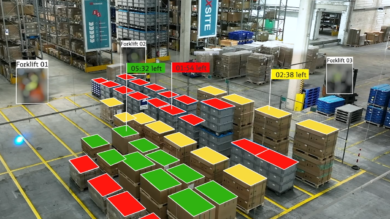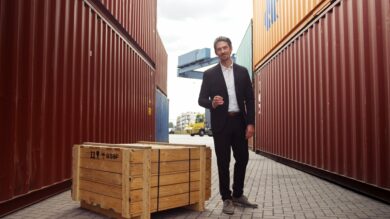Supply chain disruptions have been proven an essential risk factor to many companies over the last few years. In this environment, a new spare parts solution based on 3D printing is introduced by DB Schenker to face the spare parts supply chain challenges of today: Digital Warehousing.
But what is digital warehousing? How does it work? And how can a logistics company apply 3D printing?
In this interview, Jochen Loock, Business Development Manager at DB Schenker, discusses their digital warehouse service, “On-Demand Production” with Logistics Matters. With more than seven years of 3D printing experience at Fraunhofer and a strong entrepreneurial mindset, he shares some insights about the digital warehouse approach and what to expect in the future.

Logistics Matters: “Jochen, Digital Warehouse appears to be another buzzword. What is it actually about?”
Jochen Loock: “For us, the digital warehouse is a concept based on storing parts in a digital format instead of in physical storage. When there is a demand, instead of sending the part physically, the parts can be sent digitally to a de-central production facility where the parts are then produced. 3D printing is the ideal technology to do this because of its digital nature. It can be produced on-demand at exactly the amount that is needed.”
Logistics Matters: “Why does DB Schenker now offer a digital warehouse?”
Jochen Loock: “We know from our existing spare part management solutions that customers have huge headaches with supply availabilities, and lead times have been skyrocketing for spares. This is a catastrophe for many of our customers because if machines, trains, or cars are not supplied with spare parts, they stand still, which leads to very, very high costs. The market asks us to provide innovative alternative solutions. We started offering our product one year ago, and we already have ongoing projects with eight different companies from the verticals automotive, railway, and industrial. One example of a current partner is Deutsche Bahn, who already has seven years of experience printing over 80.000 spare parts. Together we take the next step to digitize 10 % of their inventory.”

Logistics Matters: “What is behind your new On-Demand Production digital warehouse service?”
Jochen Loock: “On the surface, it is a platform that stores data and makes it accessible on-demand instead of storing physical parts. In the background, it acts like an independent broker offering parts from a network of 3D printing production to the customer. Like Uber does not own cars, we do not own machines. Instead, we work with globally specialized sub-contractors who build the spare parts on demand. We coordinate the suppliers, making the process seamless for the client to get the parts in time and at the right location with the required quality. Ultimately, we help the customer integrate a complex, global 3D printing ecosystem into their existing procurement processes.”
Logistics Matters: “What are current barriers for a customer to apply the digital warehouse concept?”
Jochen Loock: “Many customers do not know where to start and are unaware which parts can be 3D printed. So, we support the identification of profitable parts with our consultancy service called “part screening”. Other customer challenges that we cover are, for example, engineering topics like the digitization of parts for a 30-year-old train or getting the same quality as the original part. We support our customers with our experience in a structured, efficient and timely manner.”
Logistics Matters: “What does the future of digital warehousing look like?”
Jochen Loock: “Currently, digital warehousing is used in the profitable niche for spare parts. Like Amazon, who started by delivering books and expanded their offering as we know it today, we expect to expand on our concept similarly. For non-3D-printable parts, it will be possible to use other technologies for on-demand production services in the future. This concept could also be extended to urgent serial production parts.
Curious to know more? Join one of two upcoming webinars introducing the digital warehouse concept and best practices (Go to Webinar Registration), visit the homepage or on LinkedIn.”
Published: January 2023










